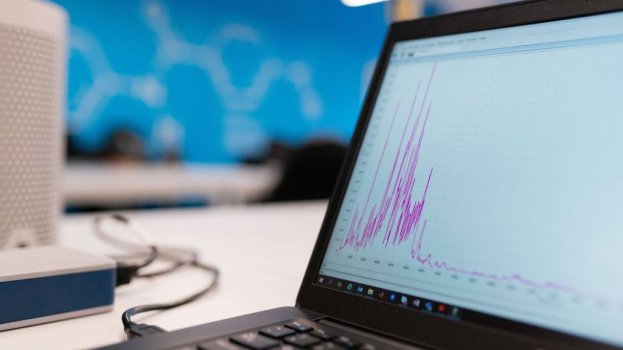K
Kathleen Martin
Guest
Predictive analytics is bringing smarter insights and better efficiency into many areas of our lives, even if we aren’t always aware of it. Take healthcare, for example, a sector that has been firmly in the spotlight in recent months. Scientists have recently combined self-reported symptoms data and artificially intelligent (AI) modeling to predict which early signs of COVID-19 can be used for faster detection.
Interest in using data stores to identify useful patterns is also sparking growing commercial interest. Companies that have watched leading players such as Amazon harness AI engines to fuel ever-more refined product suggestions are starting to see these advanced tools as a potential solution to many issues. That includes not only tackling ongoing struggles with delivering personalized digital experiences but also doing so without third-party cookies.
Data privacy has been climbing up the business agenda for years, with regulations and restrictions constantly bringing fresh customer connection challenges. As access to third-party cookies fades, predictive technologies offer an opportunity to use first-party data as the basis for building marketing and advertising strategies that operate effectively in a privacy-centric world.
Going cookie-free means doing more with less
Companies have spent 20 years tapping real-time data signals from third-party providers to find, match, and reach relevant audiences with targeted digital advertising. So, it follows that reconfiguring this long-running system is a huge undertaking — one even Google looks to have underestimated — which will mean major changes for traditional data practices.
Among the biggest shifts will be adapting to lower data availability. Recognizing the need to create new data frameworks, organizations are turning their gaze towards alternative, direct sources – with over half of global ad execs set to increase the use of first-party data. But while this approach has many benefits, including continued access to privacy-safe insight, it’s also likely data volumes will fall as the amount of information shared by users varies.
Ensuring future success, therefore, depends on achieving more with less. Google, for example, has already shown one way that predictive tools can optimize existing assets. Drawing on anonymized browsing data, its Federated Learning of Cohorts (FloC) proposal applies AI modeling to sort users into targetable segments in line with specific interests. By leveraging these types of predictive technologies, firms can maximize their own first-party data value without necessarily strengthening their ties to walled gardens.
Predicting a path to better targeting
As wider data management solutions develop AI capabilities, there is growing potential for businesses to make better use of the data they own.
For starters, AI-supported processing powers instant consolidation and analysis of diverse data sets. Providing a granular view of unique needs, tastes, and preferences for consenting users, these smart developments allow accurate profiling and highly tailored experiences.
Continue reading: https://bdtechtalks.com/2021/09/05/predictive-ai-customer-connection/
Interest in using data stores to identify useful patterns is also sparking growing commercial interest. Companies that have watched leading players such as Amazon harness AI engines to fuel ever-more refined product suggestions are starting to see these advanced tools as a potential solution to many issues. That includes not only tackling ongoing struggles with delivering personalized digital experiences but also doing so without third-party cookies.
Data privacy has been climbing up the business agenda for years, with regulations and restrictions constantly bringing fresh customer connection challenges. As access to third-party cookies fades, predictive technologies offer an opportunity to use first-party data as the basis for building marketing and advertising strategies that operate effectively in a privacy-centric world.
Going cookie-free means doing more with less
Companies have spent 20 years tapping real-time data signals from third-party providers to find, match, and reach relevant audiences with targeted digital advertising. So, it follows that reconfiguring this long-running system is a huge undertaking — one even Google looks to have underestimated — which will mean major changes for traditional data practices.
Among the biggest shifts will be adapting to lower data availability. Recognizing the need to create new data frameworks, organizations are turning their gaze towards alternative, direct sources – with over half of global ad execs set to increase the use of first-party data. But while this approach has many benefits, including continued access to privacy-safe insight, it’s also likely data volumes will fall as the amount of information shared by users varies.
Ensuring future success, therefore, depends on achieving more with less. Google, for example, has already shown one way that predictive tools can optimize existing assets. Drawing on anonymized browsing data, its Federated Learning of Cohorts (FloC) proposal applies AI modeling to sort users into targetable segments in line with specific interests. By leveraging these types of predictive technologies, firms can maximize their own first-party data value without necessarily strengthening their ties to walled gardens.
Predicting a path to better targeting
As wider data management solutions develop AI capabilities, there is growing potential for businesses to make better use of the data they own.
For starters, AI-supported processing powers instant consolidation and analysis of diverse data sets. Providing a granular view of unique needs, tastes, and preferences for consenting users, these smart developments allow accurate profiling and highly tailored experiences.
Continue reading: https://bdtechtalks.com/2021/09/05/predictive-ai-customer-connection/

